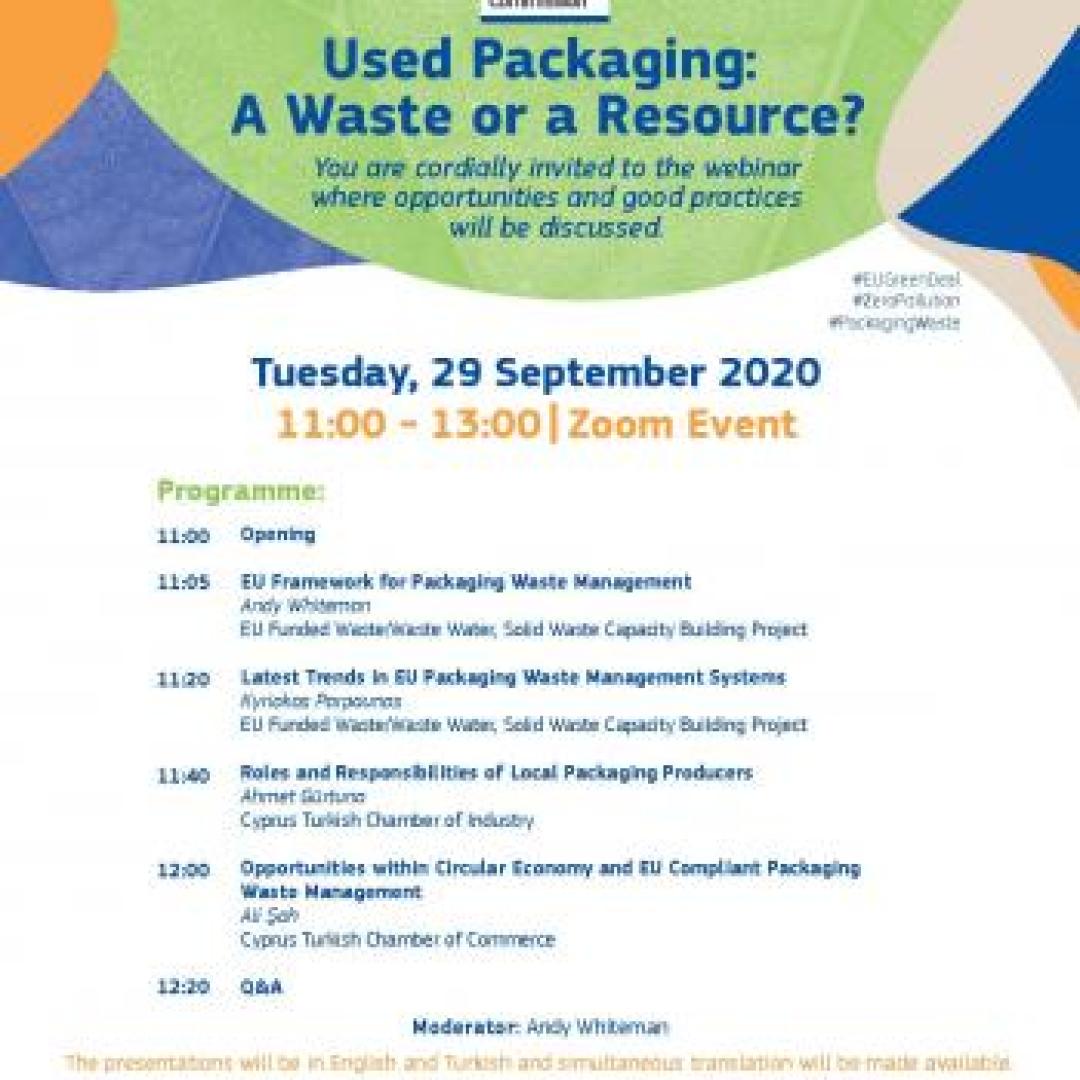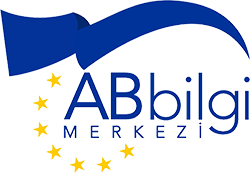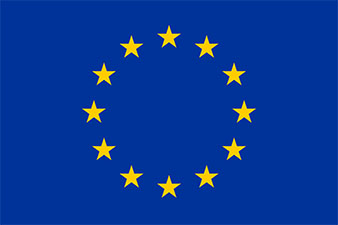Used Packaging: A Waste or a Source?

Packaging Waste Management
Used Packaging: A Waste or a Source?
The European Commission highlighted the importance of a modernised approach to packaging waste management during a webinar where discussion took place on how this dynamic new sector of economy is emerging and the related opportunities and good practices in the sector. The webinar took place as part of the European Green Deal Campaign and took place on Tuesday, 29 September 2020 from 11:00 to 13:00 via Zoom and shared live on EU Infopoint Facebook page.
During the webinar Andy Whiteman, Team Leader of the EU funded Water/Wastewater, Solid Waste Sector Capacity Building Project talked about the European Union Framework for Packaging Waste Management. Kyriakos Parpounas, who is an expert in the same project, discussed European Union Packaging Waste Management Systems and shared examples of good practices in his presentation. Ahmet Gürtuna from the Cyprus Turkish Chamber of Industry drew attention to the roles and responsibilities of local packaging producers and make suggestions. Ali Şah, from the Turkish Cypriot Chamber of Commerce, highlighted the employment and trade opportunities in the circular economy, EU-compliant packaging waste management and will also present examples of good practices.
The European Union is the world’s number one innovator in modernising packaging and packaging waste management. Over recent years important lessons have been learnt, and new business models are emerging. The historic Make-Consume-Throw Away, economy is fast becoming a thing of the past.
Modern environmental infrastructure is essential. The EU has been supporting the Turkish Cypriot community in the environmental sector since 2006 with many examples of successful projects, particularly in solid waste, water waste, and water supply. These systems are particularly important in Cyprus – an island known for its natural beauty, but with limited space and resources.
The EU Aid Programme for the Turkish Cypriot community has a specific objective to develop and strengthen environmental infrastructure. More recently, one of the key areas where EU support has been provided is on packaging and packaging waste. This was achieved through improvement of the legal framework, planned new infrastructure investments and support in the establishment of packaging waste management systems. This is to be a key area for continued EU Aid Programme support to the Turkish Cypriot community in the coming years.
Educating the public and other stakeholders is an essential part of the solid waste management strategy. The EU has therefore also supported projects aimed at increasing awareness about waste management, EU waste and recycling management policies, and good practices. Since 2016 numerous events have been organised to highlight waste prevention and recycling by the Capacity Building to the Water/Wastewater and Solid Waste Sectors Project in partnership with the EU Infopoint.
Background:
The European Commission has adopted a new Circular Economy Action Plan - one of the main blocks of the European Green Deal, Europe’s new agenda for sustainable growth. The new Action Plan announces initiatives along the entire life cycle of products, targeting for example their design, promoting circular economy processes, fostering sustainable consumption, and aiming to ensure that the resources used are kept in the EU economy for as long as possible. It introduces legislative and non-legislative measures targeting areas where action at the EU level brings real added value.
The amount of materials used for packaging is growing continuously and in 2017 packaging waste in Europe reached a record – 173 kg per inhabitant, the highest level ever. In order to ensure that all packaging on the EU market is reusable or recyclable in an economically viable way by 2030, the Commission will review Directive 94/62/EC27 to reinforce the mandatory essential requirements for packaging to be allowed on the EU market and consider other measures, with a focus on reducing (over)packaging and packaging waste, including by setting targets and other waste prevention measures such as driving design for re-use and recyclability of packaging, including considering restrictions on the use of some packaging materials for certain applications, in particular where alternative reusable products or systems are possible or consumer goods can be handled safely without packaging; considering reducing the complexity of packaging materials, including the number of materials and polymers used.

